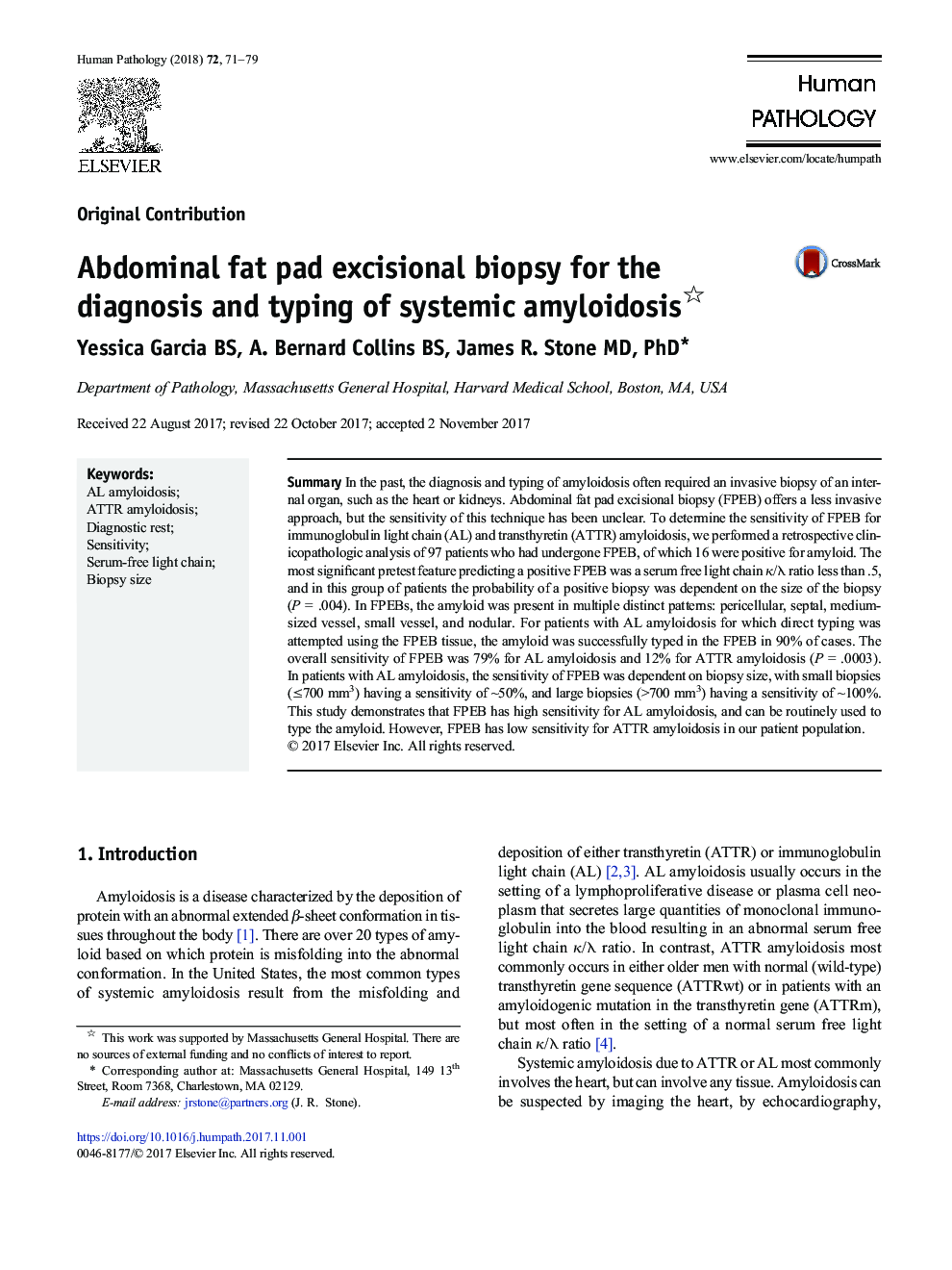| Article ID | Journal | Published Year | Pages | File Type |
|---|---|---|---|---|
| 8807642 | Human Pathology | 2018 | 9 Pages |
Abstract
In the past, the diagnosis and typing of amyloidosis often required an invasive biopsy of an internal organ, such as the heart or kidneys. Abdominal fat pad excisional biopsy (FPEB) offers a less invasive approach, but the sensitivity of this technique has been unclear. To determine the sensitivity of FPEB for immunoglobulin light chain (AL) and transthyretin (ATTR) amyloidosis, we performed a retrospective clinicopathologic analysis of 97 patients who had undergone FPEB, of which 16 were positive for amyloid. The most significant pretest feature predicting a positive FPEB was a serum free light chain κ/λ ratio less than .5, and in this group of patients the probability of a positive biopsy was dependent on the size of the biopsy (P = .004). In FPEBs, the amyloid was present in multiple distinct patterns: pericellular, septal, medium-sized vessel, small vessel, and nodular. For patients with AL amyloidosis for which direct typing was attempted using the FPEB tissue, the amyloid was successfully typed in the FPEB in 90% of cases. The overall sensitivity of FPEB was 79% for AL amyloidosis and 12% for ATTR amyloidosis (P = .0003). In patients with AL amyloidosis, the sensitivity of FPEB was dependent on biopsy size, with small biopsies (â¤700 mm3) having a sensitivity of ~50%, and large biopsies (>700 mm3) having a sensitivity of ~100%. This study demonstrates that FPEB has high sensitivity for AL amyloidosis, and can be routinely used to type the amyloid. However, FPEB has low sensitivity for ATTR amyloidosis in our patient population.
Keywords
Related Topics
Health Sciences
Medicine and Dentistry
Pathology and Medical Technology
Authors
Yessica BS, A. Bernard BS, James R. MD, PhD,
